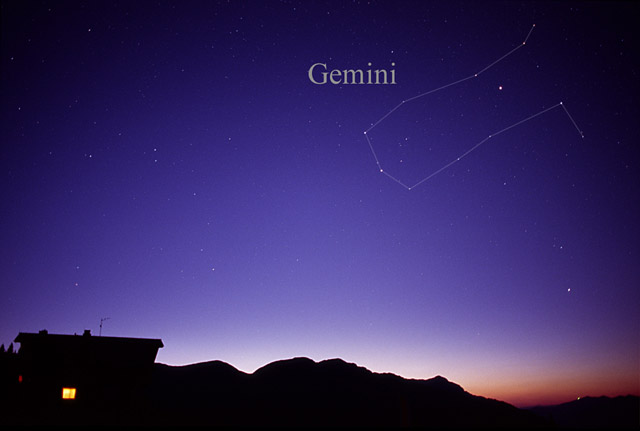|
WD J1953−1019
WD J1953−1019 is a hierarchical triple system of white dwarfs located at about 130 parsecs (about 420 light years) from the Earth. This is the first triple system of white dwarfs to be resolved. The three white dwarfs have an atmosphere of pure hydrogen and a mass of about 0.6 times that of the Sun. The system consists of a central pair, WD J1953−1019 BC, and a distant companion, WD J1953−1019 A. WD J1953−1019 B and C correspond to the sources Gaia DR2 4190499986125543168 and 4190499986125543296 respectively. The white dwarfs of the central pair, WD J1953−1019 B and C, are separated from each other while the distant companion, WD J1953−1019 A, orbits the barycenter, or center of mass, of the central binary at a distance of . The cooling age found by M. Perpinyà-Vallès and collaborators for the three white dwarfs is consistent, with an estimated value between 40 and 290 million years. The three stars would each come from a star that had a mass between 1.6 an ... [...More Info...] [...Related Items...] OR: [Wikipedia] [Google] [Baidu] |
Type Ia Supernova
A Type Ia supernova (read: "type one-A") is a type of supernova that occurs in binary systems (two stars orbiting one another) in which one of the stars is a white dwarf. The other star can be anything from a giant star to an even smaller white dwarf. Physically, carbon–oxygen white dwarfs with a low rate of rotation are limited to below 1.44 solar masses (). Beyond this "Chandrasekhar limit, critical mass", they reignite and in some cases trigger a supernova explosion; this critical mass is often referred to as the Chandrasekhar mass, but is marginally different from the absolute Chandrasekhar limit, where electron degeneracy pressure is unable to prevent catastrophic collapse. If a white dwarf gradually accretes mass from a binary companion, or merges with a second white dwarf, the general hypothesis is that a white dwarf's core will reach the ignition temperature for Carbon burning process, carbon fusion as it approaches the Chandrasekhar mass. Within a few seconds of ... [...More Info...] [...Related Items...] OR: [Wikipedia] [Google] [Baidu] |
Triple Star Systems
Triple is used in several contexts to mean "threefold" or a "Treble (other), treble": Sports * Triple (baseball), a three-base hit * A basketball three-point field goal * A figure skating jump with three rotations * In bowling terms, three strikes in a row * In cycling, a crankset with three chainrings Places * Triple Islands, an uninhabited island group in Nunavut, Canada * Triple Island, British Columbia, Canada * Triple Falls (other), four waterfalls in the United States & Canada * Triple Glaciers, in Grand Teton National Park, Wyoming * Triple Crossing, Richmond, Virginia, believed to be the only place in North America where three Class I railroads cross * Triple Bridge, a stone arch bridge in Ljubljana, Slovenia Transportation * Kawasaki triple, a Japanese motorcycle produced between 1969 and 1980 * Triumph Triple, a motorcycle engine from Triumph Motorcycles Ltd * A straight-three engine * A semi-truck with three trailers Science and technology * Triple ( ... [...More Info...] [...Related Items...] OR: [Wikipedia] [Google] [Baidu] |
Gemini (constellation)
Gemini is one of the constellations of the zodiac and is located in the northern celestial hemisphere. It was one of the 48 constellations described by the 2nd century AD astronomer Ptolemy, and it remains one of the 88 modern constellations today. Its name is Latin for ''twins'', and it is associated with the twins Castor and Pollux in Greek mythology. Its old astronomical symbol is (♊︎). Location Gemini lies between Taurus (constellation), Taurus to the west and Cancer (constellation), Cancer to the east, with Auriga (constellation), Auriga and Lynx (constellation), Lynx to the north, Monoceros (constellation), Monoceros and Canis Minor to the south, and Orion (constellation), Orion to the south-west. In classical antiquity, Cancer was the location of the Sun on the June solstice, northern solstice (June 21). During the first century AD, axial precession shifted it into Gemini. In 1990, the location of the Sun at the northern solstice moved from Gemini into Taurus, wh ... [...More Info...] [...Related Items...] OR: [Wikipedia] [Google] [Baidu] |
WD J0651+2844
WD J0651+2844 is a white dwarf binary star A binary star or binary star system is a system of two stars that are gravitationally bound to and in orbit around each other. Binary stars in the night sky that are seen as a single object to the naked eye are often resolved as separate stars us ... star system, system composed of two white dwarfs. They are approximately 120,000 km apart and complete an orbit around their Barycentric coordinates (astronomy), barycenter in less than 13 minutes. This produces an Eclipsing binary#Eclipsing binaries, eclipse every 6 minutes. This makes it possible to gather enough data to produce extremely accurate predictions of each future eclipse. The eclipse times deviate from the time predicted in a way consistent with gravitational waves. References Gemini (constellation) Eclipsing binaries Spectroscopic binaries White dwarfs SDSS objects {{whitedwarf-star-stub ... [...More Info...] [...Related Items...] OR: [Wikipedia] [Google] [Baidu] |

